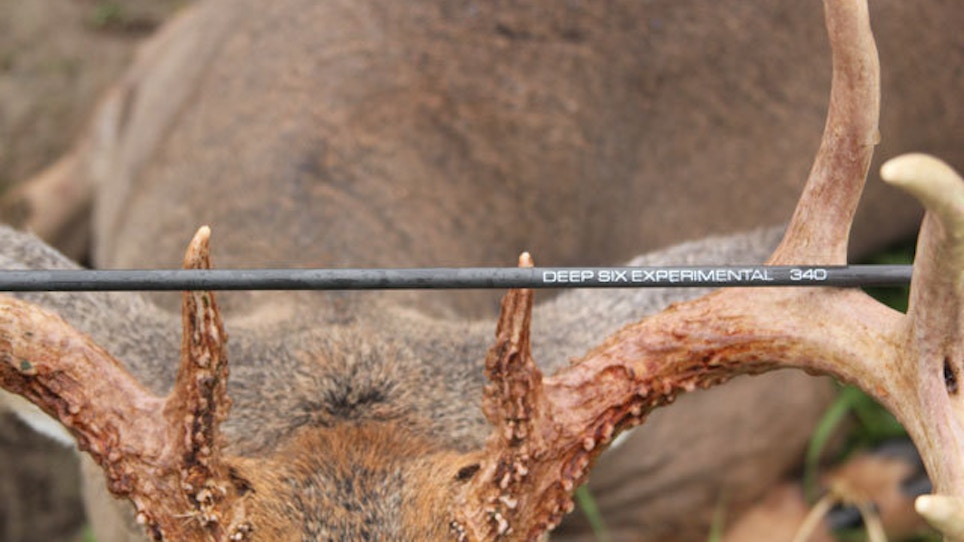Recently, I promised you that, after a "sneak peek" at Easton's new "Deep Six Experimental" shafts and some extensive range testing, I would come back and let you know how they performed under real-life hunting conditions.
Two words: exceptionally well.
To recap, these shafts are an attempt by Easton to produce a micro-diameter hunting shaft featuring all the benefits of the state-of-the-art Deep six technology at a price that pretty much all bowhunters can afford. These shafts incorporate Easton Deep Six HIT RPS inserts that are 65 percent stronger than conventional aluminum inserts. Also, the higher-density steel moves weight forward for increased Front Of Center (F.O.C.) performance, and Deep Six components also provide 25 percent more thread engagement to keep points secure and rattle free. Deep Six inserts, broadheads and points work together as a system and will not work with older, conventional 8-32 threaded inserts.
I spent a lot of time on the range with these arrows, dialing in a 70 lb. Mathews ChillR out to 80 yards. It was during these range sessions that my confidence in the accuracy of these 28 3/8-inch, 433-grain shafts when tipped with a 100-grain NAP Kill Zone practice point soared off the charts. (Raw arrow speed is 280 fps.) This proved to be critical on my hunt last week in northern Missouri.
I was the guest of David and Carman Forbes, a pair of ultra-serious whitetail freaks who also happened to be the founders of hunting accessory powerhouse Hunter's Specialties, on their incredible near-1800-acre C&D Farms. The moon could not have been any fuller, and the weather was so warm and drizzly that the skeeters thought it was mid-summer. This deer movement was slow, even for a whitetail Valhalla like this.
The last 20 minutes of my hunt is when I got my chance. Hunting over a tidy clover field holding more than a dozen deer, a lone 10-point decided, for a reason known only to him, to exit the field 20 yards further away from me than all the others. With light fading and the buck quartering away as he slinked into the thick brush, I placed my 40-yard pin high just in front of his right hip and touched it off. I heard the arrow smack, and then, a few agonizing seconds later, heard the buck crash in the downed leaves inside the thick tree line.
The Kill Zone-tipped Experimental shaft impacted the buck exactly where I wanted it to. The broadhead cut a huge hole, and the heavy shaft's momentum drove it the length of the buck's body, ending up in the off-side scapula.
I came away from this hunt with several thoughts (not the least of which was, “Man, I cannot imagine what this farm will look like in 3 weeks, with huge bucks running crazily about everywhere!”) First and foremost, confidence in your bow-and-arrow set-up is critical. You have to know -- not think, know -- that when you cut the shot the arrow will fly with laser-like precision where your skills have guided it. Second, your shafts must be consistently straight, strong, and balanced properly so they will always go where intended. And third, the broadhead must be able to both cut a big hole and be strong enough to hold together, even when it smashes through rib bones and has to slice through thick muscle and hide.
I am still not sure what Easton plans on calling these new arrows when they come on the market, possibly later this year. What I do know is they are an excellent hunting arrow, and with the Deep Six technology they are on the cutting edge of the performance envelope.
They’ll be worth checking out.






